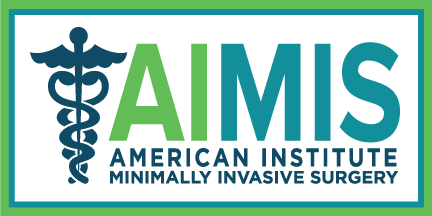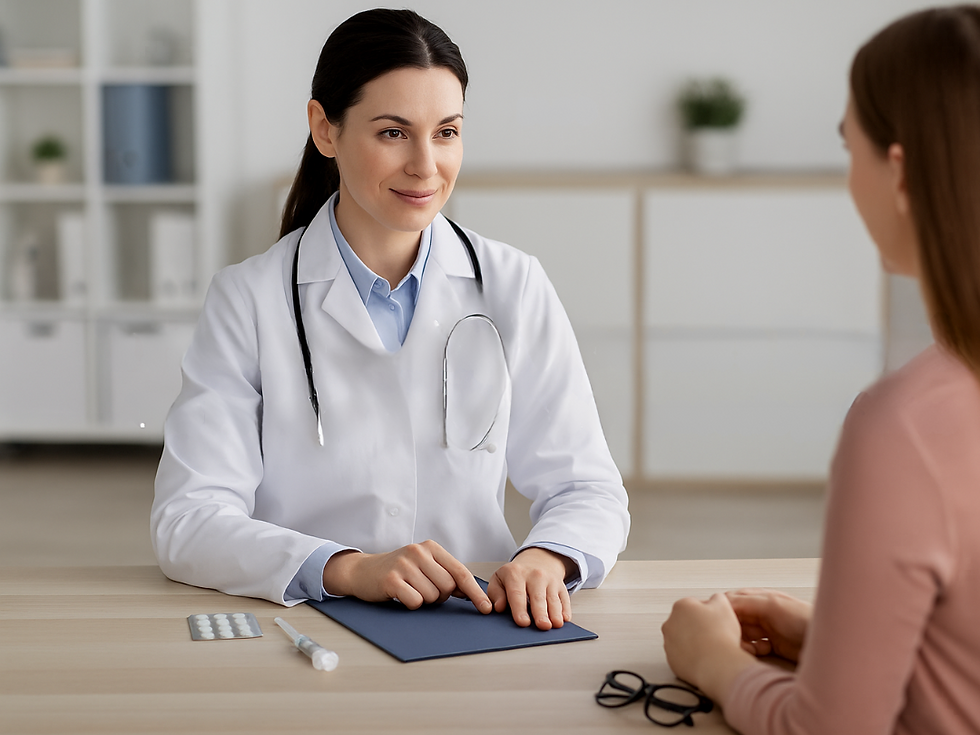The New Rules of Medical Education: Hands-On, Tech-Driven, Peer-Led
- Christopher Guinn

- Apr 10
- 5 min read

By Christopher A. Guinn, CEO of AIMIS
In today’s rapidly evolving healthcare landscape, the need for effective, relevant, and timely medical education has never been greater. Physicians are expected to remain at the forefront of clinical innovation, patient care, and emerging technologies—often while balancing the demands of a busy practice, administrative responsibilities, and a personal life. For most, learning doesn’t stop after residency or fellowship. In fact, that’s when the real education begins.
As the CEO and founder of AIMIS (the American Institute of Minimally Invasive Surgery), I’ve had the privilege of working closely with some of the most forward-thinking minds in medicine, surgery, and medical device innovation. Through these partnerships, I’ve gained a unique perspective on how physicians best learn—especially in a post-graduate setting where time is limited and impact matters most.
The Old Model No Longer Fits
Traditional continuing medical education (CME) often involves passive learning: lectures, journal articles, or online modules that can be consumed at a physician’s convenience. While these formats certainly have a place, they often fall short of producing real behavior change or improving clinical outcomes. They are typically siloed, static, and disconnected from the hands-on, experiential learning that physicians need to confidently apply new technologies or therapeutic options.
Today’s post-graduate learners are looking for more than check-the-box CME. They want high-impact, relevant education that helps them make better decisions in real time, navigate complex cases, adopt emerging technologies, and understand the ever-growing landscape of non-surgical and pharmacologic treatment options.
Adult Learning Has Evolved—So Should Our Methods
Modern physicians are adult learners—and adult learning principles are well established. The most effective education for this demographic is:
– Self-directed: Learners want autonomy and relevance.
– Problem-centered: Education must solve real clinical challenges.
– Experience-based: Prior knowledge and context matters.
– Hands-on: Skills are best developed through simulation and practice. – Peer-to-peer: Collaborative, faculty-led discussion enhances retention.
This is why we see such impact when we move away from one-way lectures and toward interactive formats—where learning is rooted in real-world application, case discussion, and hands-on experience.
Where Innovation Meets Education: Technology-Driven Learning
We are entering a new era where the pace of technological advancement is unprecedented. Physicians today must navigate innovations in:
– Robotic surgery platforms (like the latest iterations of da Vinci and new entrants in digital laparoscopy)
– Ablation technologies for gynecologic and oncologic indications
– Image-guided procedures and diagnostics
– Digital therapeutics and AI in decision-making
– Non-opioid perioperative pain management
– Non-surgical treatment approaches for chronic conditions, including endometriosis
To stay current, educational models must keep pace with the technology physicians are expected to adopt. Learning how to evaluate a new device, integrate it safely into practice, and communicate benefits to patients are skills that are not learned passively—they are learned through immersive, hands-on, collaborative training.
At AIMIS, we’ve designed our educational meetings and learning formats around this very concept. We believe physicians should not only learn about new technologies—they should have the opportunity to touch them, trial them, and evaluate them side-by-side with peers and experts.
The Power of the Hybrid Model: Didactic + Hands-On
One of the most effective learning frameworks we’ve found at AIMIS is the hybrid model: combining short, high-yield didactic sessions with intensive hands-on experience.
Our in-person educational summits, masterclasses, and clinical workshops are designed to reflect the rhythm of modern surgical learning. Sessions begin with brief, to-the-point presentations by real-world experts—not just researchers or academic lecturers, but surgeons and physicians who are using these technologies daily. Then we transition quickly into labs, simulations, or roundtable discussions where the learning becomes practical and interactive.
This combination has proven to be a powerful format for both early adopters and those considering a transition in practice. Whether it’s adopting robotics, considering non surgical alternatives for endometriosis, or optimizing patient care without opioids, this format delivers measurable value.
Redefining the Learning Agenda: Beyond the Scalpel
It’s also time to redefine what we teach. While surgical technique will always be a core focus, we must also address the broader scope of modern patient care.
For example, non-surgical strategies for managing endometriosis are rapidly gaining traction. New diagnostic algorithms, hormonal modulation, targeted therapy, and physical therapy protocols are allowing patients to delay or avoid surgery. Likewise, the opioid crisis has forced all of us to rethink our approach to post-operative pain management. Physicians are now seeking real-world protocols and multimodal strategies that reduce or eliminate opioid exposure without compromising outcomes.
These topics aren’t always covered in residency or fellowship. They require dedicated post graduate training, ideally delivered in an environment that respects clinical nuance and patient variability. That’s where AIMIS—and programs like ours—fill a vital gap.
Peer-to-Peer Learning: The Gold Standard
One of the most underappreciated aspects of adult learning is the value of peer-to-peer interaction. Physicians trust other physicians. They want to hear what’s working, what’s not, and how a colleague handled a specific challenge. They don’t want a sales pitch. They want authenticity.
This is why AIMIS educational programs are led by practicing clinicians and respected thought leaders across specialties. Our faculty don’t just present slides—they share cases, lessons learned, and practical insights gained from their own journey. That transparency creates trust and drives engagement.
Moreover, when a room is filled with passionate, curious clinicians from different backgrounds, the dialogue becomes rich, nuanced, and powerful. Whether it’s a roundtable on robotic indications or a collaborative session on endometriosis pathways, the learning often continues long after the official session ends.
Building a Lifelong Learning Ecosystem
Physician education isn’t a one-time event—it’s a continuum. From new device launches to evolving pharmacologic options, from regulatory updates to surgical innovations, clinicians need a trusted ecosystem to support ongoing learning.
At AIMIS, we are committed to being that ecosystem. Through a combination of live meetings, on-demand education, clinical fellowships, and faculty development programs, we are helping physicians stay ahead of the curve, elevate their practice, and deliver the best possible outcomes for their patients.
We also understand that education must be accessible. That’s why we offer a blend of formats—regional meetings, virtual workshops, immersive lab-based sessions—so that no matter where you practice or what your schedule allows, there’s an opportunity to stay current and connected.
What the Future Holds
As we look to the future, several trends will shape how physicians learn:
Personalized Learning Journeys: Tailored pathways that align with subspecialty, practice setting, and stage of career.
Integrated Simulation: Advanced tools for robotic and procedural simulation to accelerate skill acquisition.
Collaborative Ecosystems: Bringing together physicians, device companies, payors, and educators to co-create relevant learning experiences.
Real-Time Learning Analytics: Platforms will increasingly measure engagement, comprehension, and clinical application—allowing educators to adapt content and delivery methods based on outcomes.
Global Communities of Practice: As borders become less of a barrier, physicians will engage in global learning networks, exchanging ideas and innovations with colleagues around the world.
At AIMIS, we’re already building toward that future—and we invite you to be part of it. A Call to Action
If you are a physician committed to lifelong learning, if you want to stay ahead of clinical and technological change, and if you value the power of peer-driven, hands-on education, I encourage you to seek out programs that match that energy.
Look for meetings where you can not only learn, but engage. Where faculty are clinicians— not just speakers. Where you can trial the latest tools, debate real-world decisions, and walk away with something you can use Monday morning.
And if you haven’t yet experienced an AIMIS event, I invite you to join us. You’ll find a community that respects your time, values your expertise, and shares your passion for clinical excellence.
After all, how we learn shapes how we care—and at AIMIS, we believe education is the most powerful tool we have to improve lives.








Comments